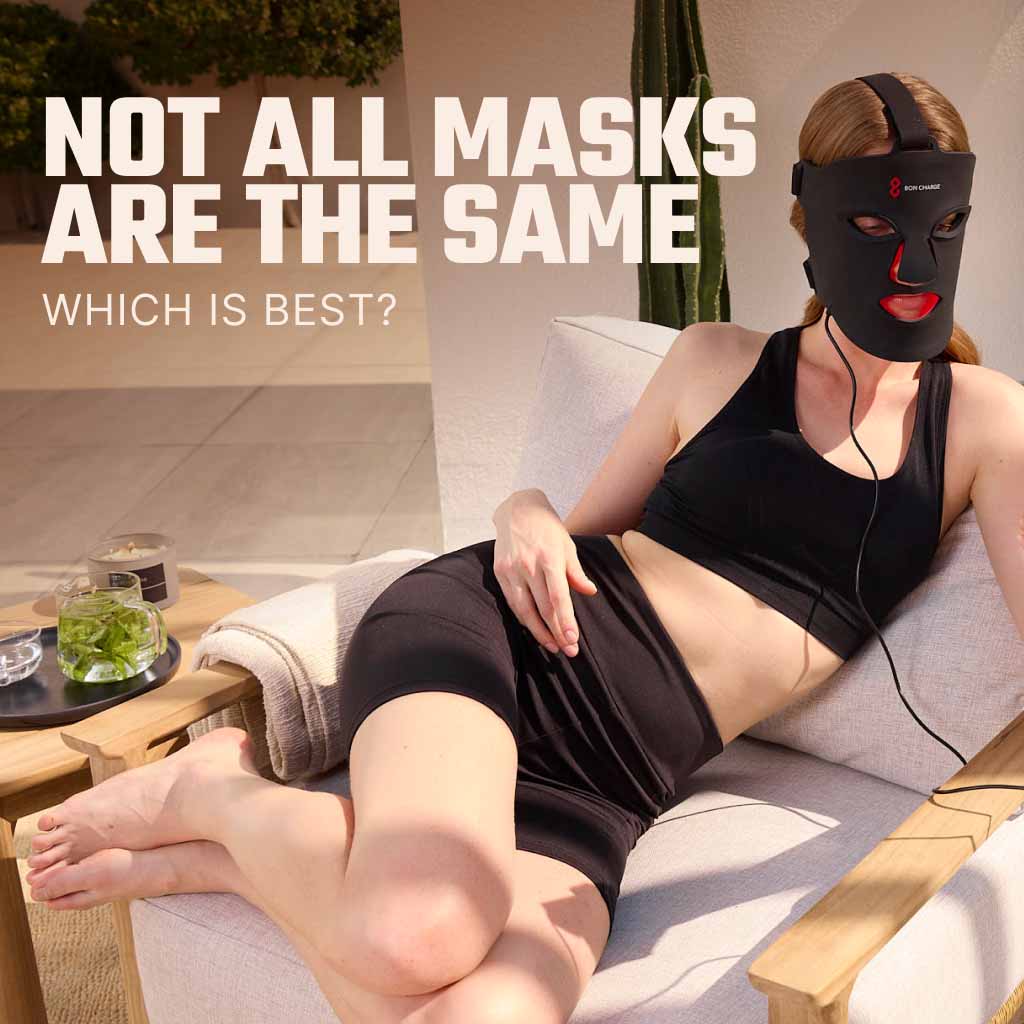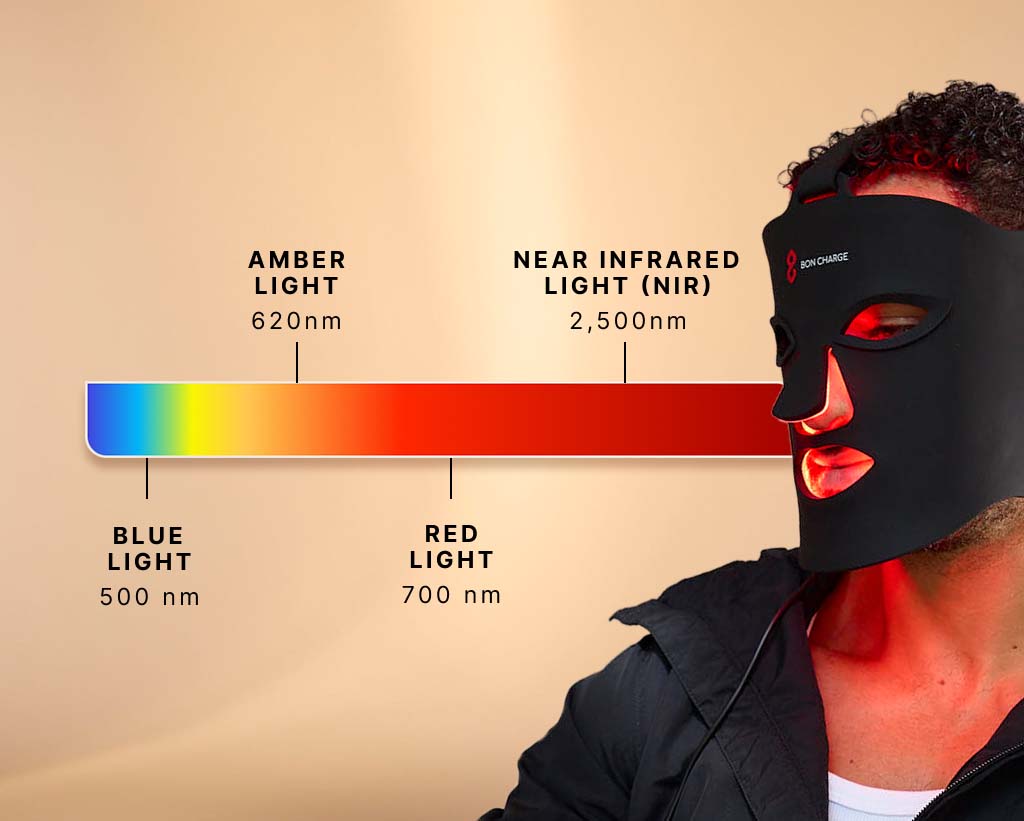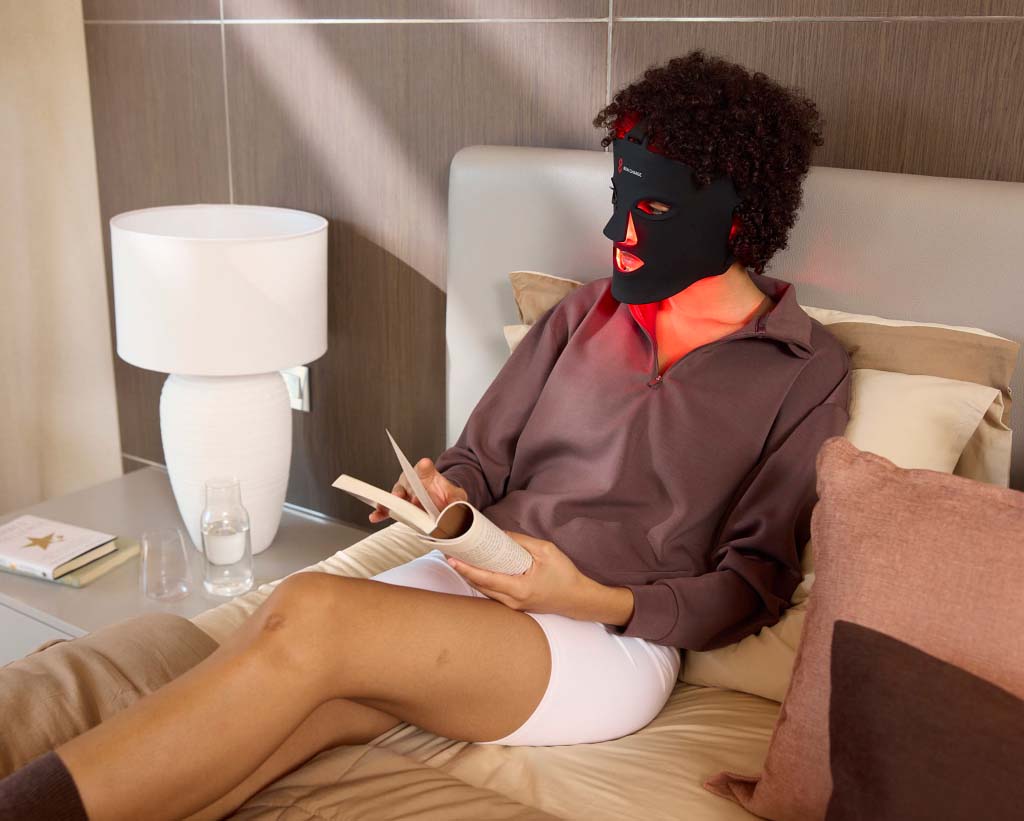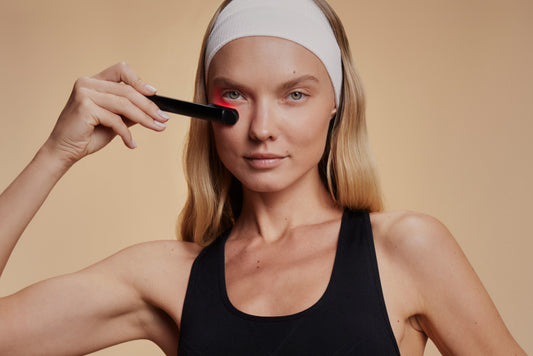Different Colored LED's Used In Face Masks
Tahnee Streatfeild
With a wide variety of LED masks on the market, you'll find everything from turquoise to magenta lights. It can be difficult to figure out which is the best option, and how they differ.
The question is which kind of light is the best and are they all safe?
Different wavelengths of the light spectrum correspond to different colors of LED light. These wavelengths penetrate the skin to different depths, having different effects.
Figuring out which type of light is best for you depends on your specific skin problems. Some of the most common types of lights used in LED Face Masks are Blue Light, Amber Light (Yellow Light), Red Light and Near Infrared Light.
Let's uncover each type and explore its unique benefits.

Blue Light
Blue light is visible light with wavelengths between 400nm and 500nm (nanometers). It usually penetrates the skin to the epidermis, which is the outermost layer.
As a result it is said to target the oil glands that are necessary for lubricating your skin. These glands can become overactive leading to oily skin, and breakouts. The theory is that blue LED light therapy can reach these glands, kill bacteria and make them less active.
While many face masks claim to use blue light to reduce blemishes, it's important to know that long exposure can dry out your skin. It may also contribute to your skin aging. Some studies indicate that extended exposure to high-energy blue light can harm the skin barrier.
Research also shows blue light, in particular 415nm can increase hyperpigmentation in the skin.
If you use blue light in the evening or early morning, it can also disrupt your circadian rhythm. This disruption can make it hard to sleep, and we all know sleep is vital part to any beauty routine.
Amber Light
Amber or Yellow Light Therapy encompasses a range of wavelengths from 570nm and 600nm. It travels further than blue light but still has a shallow penetration level. It reaches about 2-3mm into the dermis and is said to be effective for reducing the appearance of redness.
Generally speaking, it's suitable for sensitive skin. While its said to be beneficial for soothing and reducing redness, it may not be strong enough for some people. To target skin problems such as fine lines, creases, and blemishes, amber light won't reach deep enough.
Red Light and Near Infrared Light travels deeper into the skin. Therefore, it may be the more effective alternative to look out for.
Red Light
Red light is typically in the range of 620nm and 750 nm. This reaches into the dermis, and can create more cellular energy for biological processes as shown by this study. If you're looking for a mask that addresses fine lines, creases and overall skin renewal, this would be for you.
Studies show it can give you a firmer and plumper skin appearance.
It also helps to reduce the appearance of blemishes as it penetrates deeper into the skin's surface. This allows it to fight against bacteria that appears beneath.
Red light works at the root of the problem, to clear up the skins surface.
Near Infrared Light (NIR)
Near Infrared Light refers to wavelengths from 800nm and 1,200nm and is invisible to the human eye. It penetrates deepest into the skin, reaching the hypodermis (below the dermis).
By penetrating deeper into the skin, it promotes faster skin recovery and improves natural glow. Studies have shown that near-infrared LED therapy may support the skin's natural renewal process.
People often use it in conjunction with other LED light therapy to provide a boost for amplified results. You can use Near Infrared Light as part of your regular skincare routine.
The BON CHARGE Red Light Face Mask, suitable for all skin types, features the most studied wavelengths of Red and Near Infrared Light.

Final Thoughts
Of all types of light therapy, Red and Near Infrared Light (NIR) light provides the widest range of benefits.
Not every LED device on the market is the same. When looking for a LED device it's important to know the clear difference between each type of light and how it impacts your skin.
Whether you're dealing with blemishes, signs of aging, or simply looking to enhance your natural beauty Red and Near Infrared Light (NIR) is the best option. This powerhouse combination will provide you with the most optimal results.
Sign up to our newsletter to learn more about how you can enhance your overall wellness.
This content is for informational purposes only and does not constitute medical advice. Products mentioned are not intended to diagnose, treat, cure, or prevent any medical condition. Individual experiences may vary.











